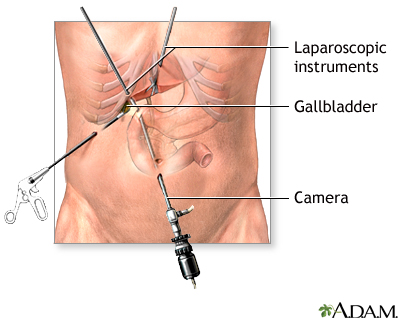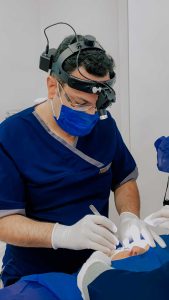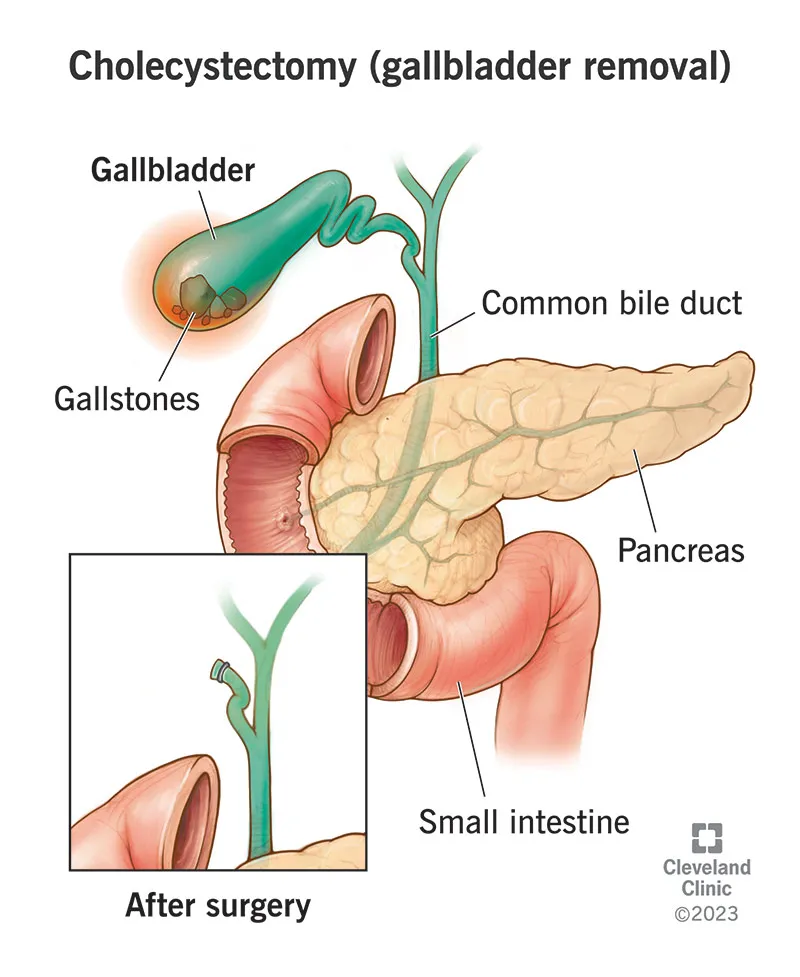Gallstones, hardened deposits of cholesterol or bilirubin in the gallbladder, can cause significant discomfort and pain. Laparoscopic cholecystectomy, also known as keyhole gallbladder removal, is a safe and effective surgical procedure to remove the gallbladder in such cases. Celine Surgery sheds light on everything you need to know about Laparoscopic Cholecystectomy, empowering you to make informed decisions about your health.
What is a Laparoscopic Cholecystectomy?
A laparoscopic cholecystectomy is a minimally invasive surgical procedure performed to remove the gallbladder. Compared to traditional open surgery, it offers several advantages, including:
- Smaller incisions: Several small incisions are made instead of a large abdominal incision.
- Less pain: Smaller incisions translate to less pain and discomfort during recovery.
- Faster recovery: Minimally invasive surgery allows for a quicker hospital stay and faster return to normal activities.
- Reduced scarring: Smaller incisions result in less noticeable scarring.

Who is a Candidate for Laparoscopic Cholecystectomy?
Laparoscopic cholecystectomy is the preferred approach for most individuals with symptomatic gallstones. However, it might not be suitable for everyone. Here’s a general overview:
- Ideal Candidates: Individuals with symptomatic gallstones who are generally healthy and have no major medical conditions that could complicate surgery.
- Potential Considerations: People with certain medical conditions, prior abdominal surgeries, or severe inflammation might require further evaluation to determine if laparoscopic surgery is feasible.
What to Expect During Laparoscopic Cholecystectomy?
The procedure typically involves these steps:
- General Anesthesia: You will be placed under general anesthesia to ensure comfort and pain-free surgery.
- Small Incisions: The surgeon typically makes 3-4 small incisions in your abdomen.
- Laparoscope Insertion: A laparoscope, a thin, lighted instrument, is inserted through one incision to visualize the surgical area.
- Surgical Instruments: Surgical instruments are inserted through the other incisions to carefully remove the gallbladder.
- Gallbladder Removal: Once the gallbladder is isolated and dissected, it is removed through one of the incisions.
- Incision Closure: The incisions are then closed with sutures or staples.
Benefits of Laparoscopic Cholecystectomy:
Compared to traditional open surgery, laparoscopic cholecystectomy offers numerous advantages:
Benefits of Laparoscopic Cholecystectomy
| Benefit | Description |
|---|---|
| Reduced Pain | Minimally invasive approach leads to less postoperative pain. |
| Faster Recovery | Shorter hospital stay and quicker return to daily activities. |
| Reduced Scarring | Smaller incisions result in less noticeable scarring. |
| Improved Cosmetic Outcome | Minimally invasive approach offers a better cosmetic outcome. |
| Less Blood Loss | A minimally invasive approach offers a better cosmetic outcome. |
Recovery After Laparoscopic Cholecystectomy:
Most patients go home the same day or the next day after surgery. Recovery typically involves:
- Pain Management: You will be prescribed pain medication to manage discomfort after surgery.
- Rest and Activity: Prioritize rest for the first few days, gradually increasing activity as tolerated.
- Wound Care: Keep the incision sites clean and dry as instructed by your doctor.
- Diet: You might initially be on a restricted diet, gradually progressing to a regular diet as tolerated.
Potential Risks and Complications:
As with any surgery, laparoscopic cholecystectomy carries some potential risks, although these are uncommon. Here’s a brief overview:
- Infection: Infection at the incision site is a potential complication.
- Bleeding: Bleeding during surgery is a rare risk.
- Injury to Bile Ducts: Damage to nearby bile ducts can occur, but it’s uncommon and usually treatable.
- Anesthesia Complications: Risks associated with general anesthesia are minimal but exist.

When to Consult Your Doctor:
If you experience any of the following symptoms after surgery, contact your doctor promptly:
- Fever or chills
- Excessive redness, swelling, or drainage from the incision site
- Severe or persistent abdominal pain
- Nausea and vomiting that won’t subside
Living a Healthy Life After Gallbladder Removal:
While you no longer have a gallbladder, your body adapts well. Bile continues to flow from the liver directly into the small intestine for digestion. Some individuals might experience occasional digestive discomfort, which can be managed with dietary adjustments.
Celine Surgery is Here for You:
If you have questions or concerns about laparoscopic cholecystectomy or gallbladder removal surgery, Contact us
People’s Concerns about gallstone:
People with gallstones often harbor a variety of concerns, ranging from immediate discomfort to long-term health implications. Here’s a breakdown of some common anxieties:
Pain and Discomfort:
- A major concern is the potential for gallstone attacks, characterized by sudden and severe upper right abdominal pain that can radiate to the back or shoulder blade. The fear of experiencing such an attack can be quite unsettling.
Complications:
- People might worry about potential complications associated with gallstones, such as cholecystitis (inflammation of the gallbladder), pancreatitis (inflammation of the pancreas), or even a ruptured gallbladder. These complications can require urgent medical attention.
Uncertainty and Diagnosis:
- Some individuals might experience vague abdominal discomfort and be unsure if it’s related to gallstones. The process of diagnosis through tests like ultrasound or CT scan can cause anxiety.
Impact on Daily Life:
- The fear of a sudden gallstone attack can disrupt daily routines and activities. People might worry about being caught unprepared for an attack while traveling, at work, or during social events.
Dietary Restrictions:
- There’s a misconception that gallstones necessitate a strict and bland diet. People might worry about giving up their favorite foods or being unable to enjoy social gatherings centered around food.
Long-Term Health Risks:
- Concerns might arise about potential long-term health risks associated with untreated gallstones, such as increased risk of bile duct cancer (although rare).
Treatment Options and Recovery:
- Individuals might feel overwhelmed by the various treatment options, including surgery, and wonder about the recovery process and potential side effects.
Here’s a breakdown of how to address these concerns:
- Early diagnosis and treatment: Early intervention with medications or surgery can minimize complications and improve overall well-being.
- Dietary adjustments: While some dietary modifications are beneficial, it’s not about strict restrictions. Focusing on a balanced diet low in saturated fats and rich in fiber can help manage symptoms and potentially prevent future issues.
- Pain management: Medications can effectively manage pain associated with gallstones.
- Minimally invasive surgery: Laparoscopic cholecystectomy offers a safe and effective option for gallbladder removal with minimal scarring and faster recovery.
Remember: Communication with your doctor is key. Discussing your concerns allows them to address your individual situation, provide reassurance, and recommend the most appropriate course of treatment for optimal health.
People’s experience with gallstones:
People with gallstones can experience a wide range of symptoms, and it’s important to remember that not everyone will have the same experience. Here’s a look at some common gallstone experiences:
Silent Gallstones:
- For some individuals, gallstones might not cause any noticeable symptoms. They might only discover them incidentally during imaging tests for other reasons.
Episodic Pain:
- Many people experience gallstones as occasional, unpredictable episodes of intense pain. This pain is often described as:
- Sudden and severe
- Located in the upper right abdomen
- Radiating to the back or right shoulder blade
- Lasting from minutes to hours
- The pain can be so debilitating that it forces them to stop whatever they’re doing and focus on managing the discomfort.
Nausea and Vomiting:
- Nausea and vomiting often accompany the upper abdominal pain associated with gallstone attacks. These symptoms can further add to the overall discomfort.
Digestive Issues:
- Some people might experience:
- Indigestion
- Bloating
- Gas
- Belching
- Feeling full after eating a small amount (early satiety)
- These digestive issues can occur even outside of a full-blown gallstone attack.
Impact on Daily Life:
- The unpredictability of gallstone attacks can significantly impact daily activities. People might:
- Fear of being caught unprepared for an attack while traveling or at work.
- Avoid certain foods or social situations that might trigger an attack.
- Experience anxiety about the potential for complications.
Variations in Experience:
- It’s important to remember that the severity and frequency of symptoms can vary greatly. Some people might have infrequent, mild attacks, while others experience frequent and debilitating pain.
Here are some online snippets capturing experiences with gallstones:
- “The pain was like a vice grip around my upper right abdomen. It took my breath away, and I had to double over.”
- “I never knew when an attack would come on. It made it hard to plan anything or feel comfortable going out.”
- “I didn’t realize the bloating and indigestion were related to gallstones until I had an ultrasound.”
If you experience any concerning abdominal pain, consult your doctor for proper diagnosis and treatment. Early intervention can prevent complications and improve your quality of life.
Top 10 Questions About Gallstones:
-
Do I have gallstones if I don’t have any symptoms?
Many people with gallstones (up to two-thirds) don’t experience any symptoms. They might only discover them incidentally during imaging tests for other reasons.
-
What causes the pain from gallstones?
Gallstones can block the bile duct, preventing bile from reaching the small intestine to aid digestion. This blockage leads to inflammation and irritation, causing the characteristic upper right abdominal pain.
-
What does a gallstone attack feel like?
The pain is often described as:
Sudden and severe
Located in the upper right abdomen
Radiating to the back or right shoulder blade
Lasting from minutes to hours
Nausea and vomiting often accompany the pain. -
What are the risk factors for gallstones?
Factors like being overweight or obese, female gender, pregnancy, rapid weight loss, high cholesterol, and certain family history can increase your risk.
-
How are gallstones diagnosed?
Ultrasound is the most common and effective diagnostic tool for gallstones. Other imaging tests like CT scans might be used in some cases.
-
Do I need to have my gallbladder removed if I have gallstones?
Not necessarily. If you don’t have symptoms, watchful waiting might be an option. However, surgery (laparoscopic cholecystectomy) is the recommended treatment for symptomatic gallstones.
-
What are the complications of gallstones?
Untreated gallstones can lead to complications like cholecystitis (inflammation of the gallbladder), pancreatitis (inflammation of the pancreas), or even a ruptured gallbladder.
-
Can I prevent gallstones?
While not always guaranteed, maintaining a healthy weight, eating a balanced diet low in saturated fat and rich in fiber, and exercising regularly can help reduce your risk.
-
What dietary changes should I make if I have gallstones?
Focus on a healthy diet low in saturated and unhealthy fats found in fried foods, processed meats, and full-fat dairy products. Include plenty of fruits, vegetables, and whole grains.
-
What happens after gallbladder removal surgery?
The body adapts well, and bile continues to flow from the liver directly into the small intestine for digestion. Some individuals might experience occasional digestive discomfort, manageable with dietary adjustments.






